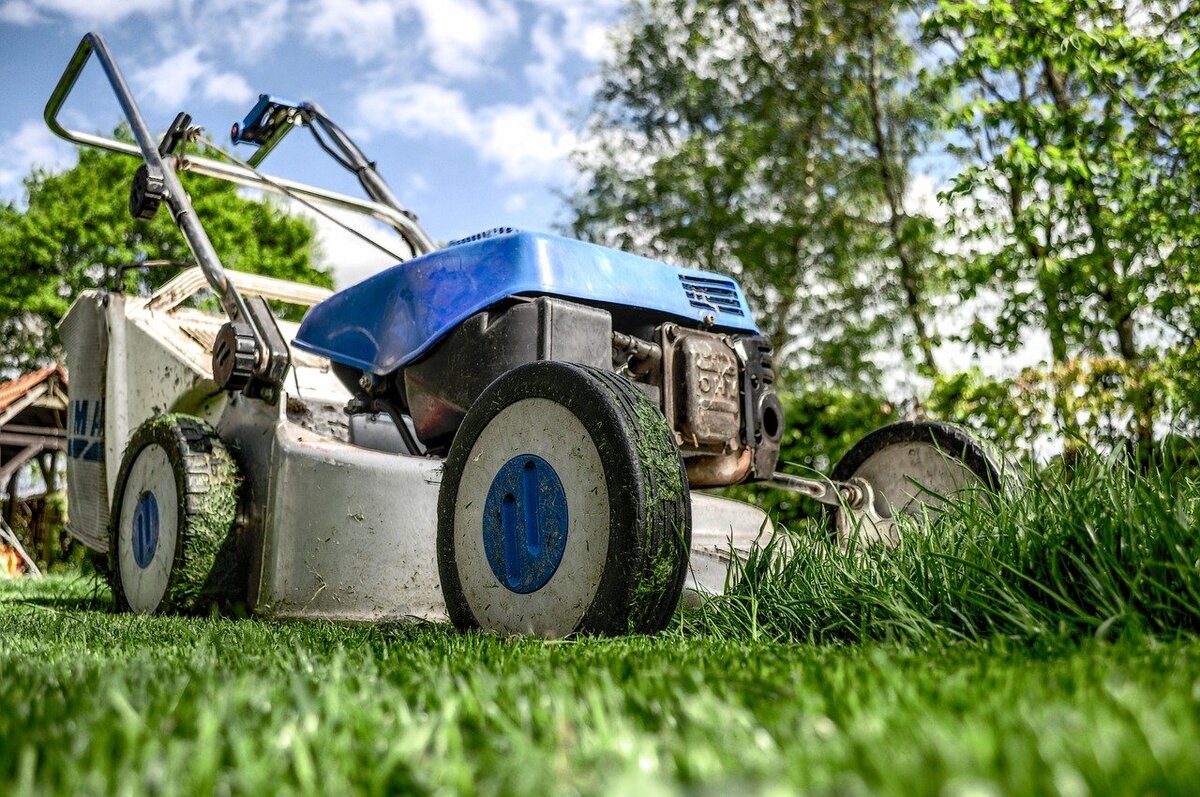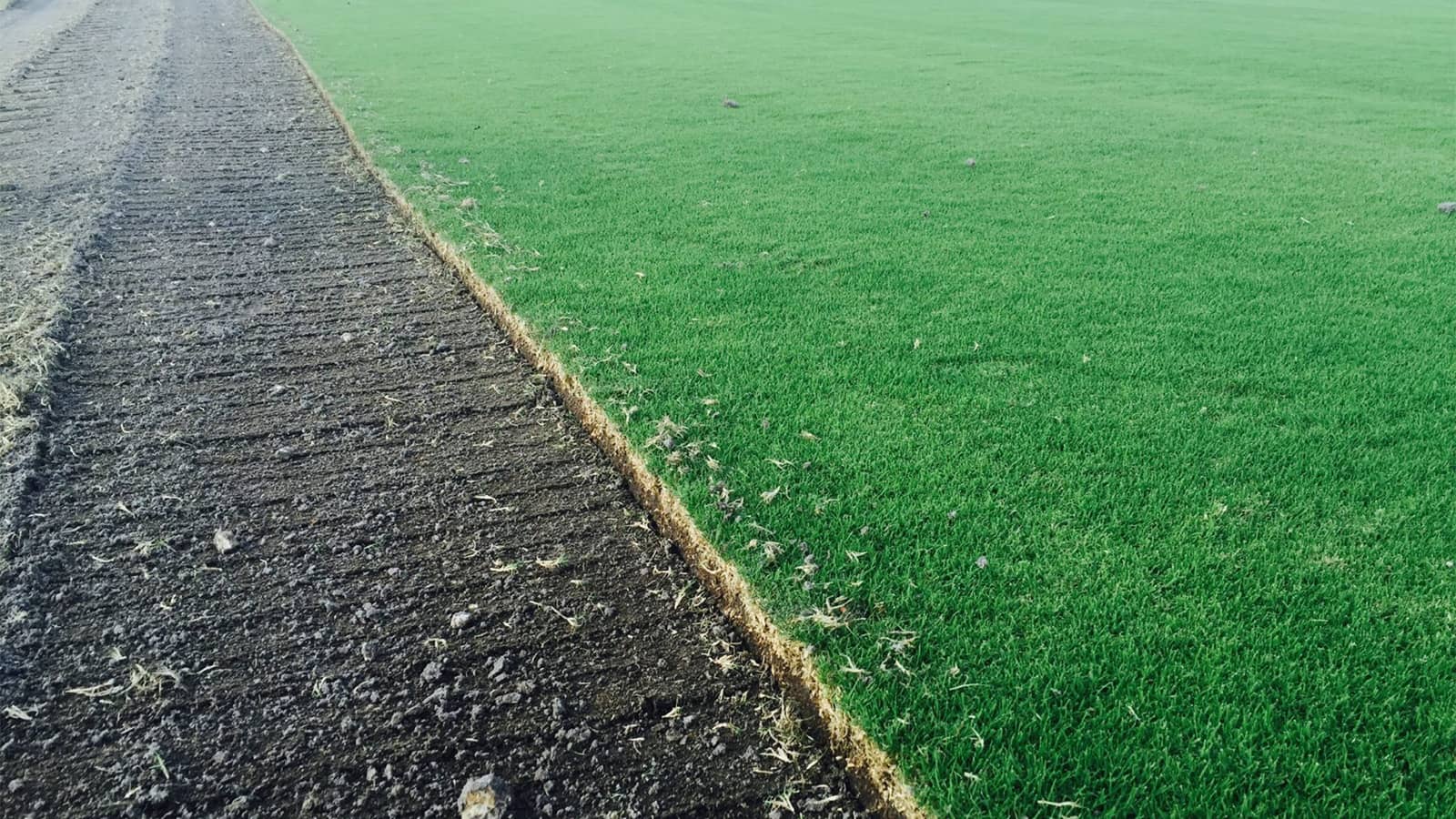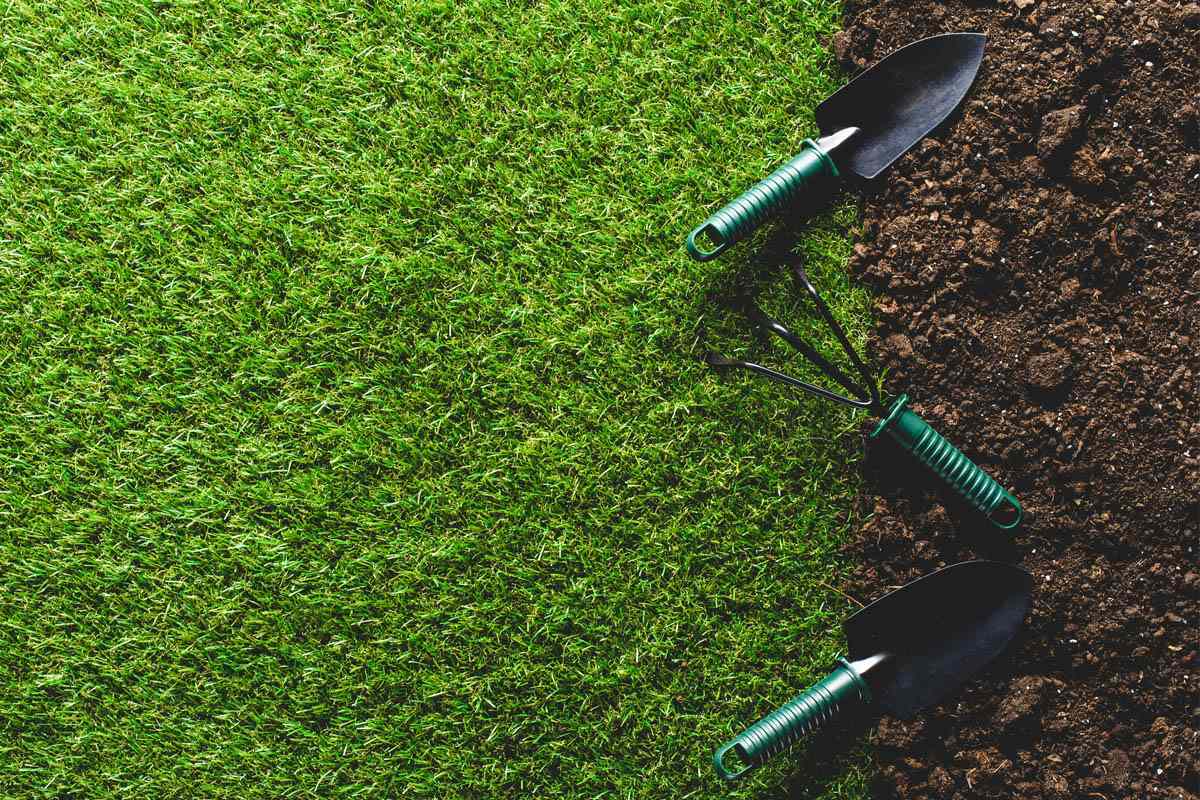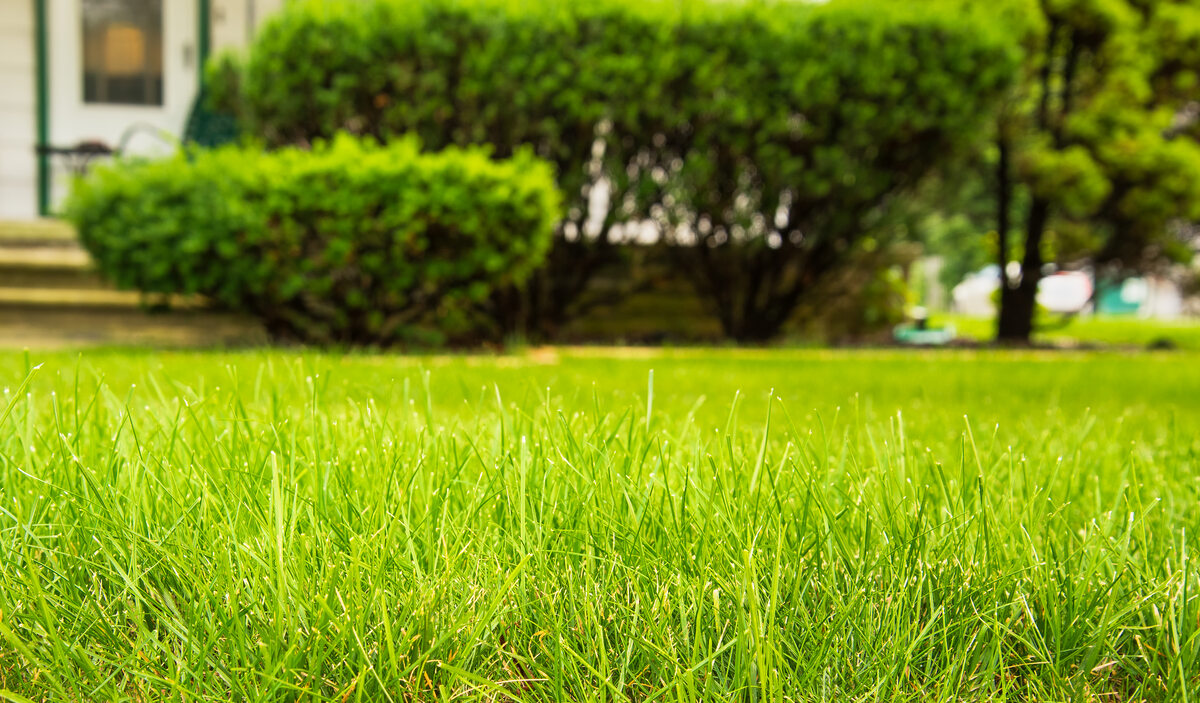Home>Gardening & Outdoor>Landscaping Ideas>How To Get Greener, Thicker Grass


Landscaping Ideas
How To Get Greener, Thicker Grass
Modified: February 18, 2024
Discover effective landscaping ideas to achieve greener, thicker grass. Learn expert tips and techniques for enhancing your lawn's appearance and health.
(Many of the links in this article redirect to a specific reviewed product. Your purchase of these products through affiliate links helps to generate commission for Storables.com, at no extra cost. Learn more)
Introduction
Welcome to the world of lush, green lawns! A well-maintained lawn not only enhances the beauty of your home but also provides a refreshing outdoor space for relaxation and recreation. Achieving a thick, green carpet of grass requires a combination of proper planning, diligent care, and a touch of expertise. In this comprehensive guide, we will explore the essential steps to help you transform your lawn into a verdant paradise.
From assessing your lawn’s current condition to selecting the right grass variety, preparing the soil, seeding, watering, fertilizing, mowing, and troubleshooting common lawn problems, we’ll cover every aspect of nurturing a healthy and vibrant lawn. Whether you’re a first-time homeowner or a seasoned gardener looking to revitalize your outdoor space, these insights and tips will empower you to achieve the lawn of your dreams.
So, grab your gardening gloves and let’s embark on this greenery-filled journey together. By the end of this guide, you’ll be equipped with the knowledge and skills to cultivate a greener, thicker lawn that will be the envy of the neighborhood.
Key Takeaways:
- Assess your lawn’s condition, choose the right grass, prepare the soil, water, fertilize, and maintain to achieve a lush, vibrant lawn. Embrace the journey and enjoy the process of nurturing your outdoor oasis.
- Combat common lawn problems like weeds, diseases, and poor soil by implementing targeted solutions. Embrace sustainable practices to minimize environmental impact and create a vibrant, resilient ecosystem.
Read more: How To Grow Thicker Grass
Assessing Your Lawn
Before diving into the process of achieving a greener, thicker lawn, it’s crucial to assess the current state of your turf. Conducting a thorough evaluation will provide valuable insights into the specific needs of your lawn, guiding your subsequent steps towards revitalization.
Begin by taking a walk around your yard, closely observing the grass. Note any areas of discoloration, thinning, or patchiness. These visual cues can indicate underlying issues such as compacted soil, poor drainage, or inadequate sunlight. Additionally, assess the overall health of the grass by examining its texture and density. Healthy grass should feel springy underfoot and exhibit a lush, uniform appearance.
Furthermore, consider the prevailing environmental conditions in your region. Factors such as climate, temperature, and precipitation patterns play a significant role in determining the most suitable grass species for your lawn. Understanding your local climate will help you select grass varieties that are resilient and well-adapted to thrive in your specific area.
Conduct a soil test to analyze the pH level and nutrient composition of your soil. This simple yet invaluable assessment will provide essential data for tailoring your soil preparation and fertilization efforts. Many local agricultural extension offices offer soil testing services, enabling you to obtain precise recommendations for optimizing your soil’s health.
By thoroughly assessing your lawn’s current condition and understanding the environmental factors at play, you’ll be well-equipped to make informed decisions as you embark on the journey to transform your lawn into a verdant oasis.
Choosing the Right Grass
When it comes to achieving a lush, vibrant lawn, selecting the right grass variety is paramount. The ideal grass for your lawn depends on various factors, including your local climate, soil type, and the level of foot traffic the lawn will endure. By choosing a grass variety that aligns with these factors, you can set the stage for a thriving and resilient lawn.
Begin by researching the grass species that are well-suited to your region’s climate. Cool-season grasses, such as Kentucky bluegrass and fescue, thrive in northern regions with cold winters and hot summers, while warm-season grasses like Bermuda grass and Zoysia are better suited to southern climates with scorching summers and mild winters.
Consider the level of maintenance and care each grass species requires. Some varieties are more tolerant of drought, shade, or heavy foot traffic, making them ideal for specific lawn conditions. For instance, if your lawn receives ample sunlight, a sun-loving grass variety such as Bermuda grass may be a suitable choice, whereas shaded areas may benefit from shade-tolerant fescue or ryegrass.
Assess the soil composition and drainage in your yard. Certain grass species thrive in well-drained soils, while others are more adaptable to clay or sandy soils. By understanding your soil type, you can select a grass variety that will flourish in your lawn’s unique growing conditions.
Another crucial consideration is the aesthetic appeal of the grass. Some homeowners prioritize a lush, dark green lawn, while others prefer a fine-bladed, manicured look. By exploring the visual characteristics of different grass species, you can choose a variety that aligns with your desired lawn aesthetic.
Ultimately, selecting the right grass variety involves a thoughtful analysis of your local climate, soil conditions, maintenance preferences, and aesthetic preferences. By choosing a grass species that harmonizes with these factors, you can lay a strong foundation for a luxuriant, healthy lawn.
Soil Preparation
The foundation of a healthy, thriving lawn lies beneath the surface – in the soil. Proper soil preparation is essential for creating an optimal environment for grass seed germination and root development. By addressing soil quality and structure, you can establish the groundwork for a lush and resilient lawn that will flourish for years to come.
Begin by aerating the soil to alleviate compaction and improve air circulation. Compacted soil restricts root growth and inhibits the absorption of essential nutrients and water. Core aeration, which involves removing small plugs of soil from the lawn, is an effective method for loosening compacted soil and promoting a healthier root system.
Conduct a soil test to determine the pH level and nutrient content of the soil. Based on the test results, amend the soil as needed to achieve the optimal pH range for grass growth, typically between 6.0 and 7.0. Adding organic matter such as compost or peat moss can improve soil structure and fertility, enhancing its ability to support healthy grass growth.
Address any drainage issues by ensuring that the soil slopes away from buildings and areas where water tends to accumulate. Poor drainage can lead to waterlogged soil, which is detrimental to grass roots and can foster disease and pest issues. By promoting proper drainage, you can create a more hospitable environment for your lawn to thrive.
Consider the application of a high-quality starter fertilizer as part of the soil preparation process. A fertilizer specifically formulated for new seedlings can provide essential nutrients to support early root development and seedling establishment. Be sure to follow the recommended application rates and guidelines to avoid over-fertilization, which can be harmful to the grass and the environment.
By meticulously preparing the soil before seeding or overseeding your lawn, you can optimize the conditions for successful grass establishment and long-term vitality. Thoughtful soil preparation sets the stage for robust root development, lush foliage, and a resilient lawn that will be the pride of your outdoor space.
Seeding and Overseeding
Seeding and overseeding are fundamental practices for establishing and enhancing the density and vitality of your lawn. Whether you’re starting from scratch with a new lawn or seeking to rejuvenate an existing one, strategic seeding and overseeding can breathe new life into your outdoor space, resulting in a thicker, lusher carpet of grass.
When establishing a new lawn, proper seeding techniques are crucial for successful germination and uniform coverage. Begin by selecting high-quality grass seed that aligns with your lawn’s specific requirements, such as sun or shade tolerance, foot traffic resilience, and climate adaptation. Ensure that the chosen seed is free of weed seeds and other contaminants to prevent future issues.
Prepare the soil by raking it to create a smooth, level surface, then evenly distribute the grass seed using a broadcast spreader or by hand. After seeding, gently rake the soil to cover the seeds with a thin layer of soil, promoting good seed-to-soil contact. Water the newly seeded area regularly to keep the soil consistently moist, facilitating germination and early growth.
Overseeding, the process of spreading grass seed over an existing lawn, is a valuable practice for enhancing the density and resilience of established turf. It helps fill in bare or thinning areas, introduces newer, more resilient grass varieties, and revitalizes the overall health and appearance of the lawn.
Prior to overseeding, mow the existing grass to a shorter height and remove any thatch buildup to expose the soil surface. This creates an ideal environment for the new seeds to make contact with the soil and germinate effectively. Use a broadcast spreader to distribute the grass seed evenly across the lawn, focusing on sparse or bare areas. Lightly rake the soil to cover the seeds and promote soil-seed contact, then water the lawn regularly to encourage germination and establishment.
Whether seeding a new lawn or overseeding an existing one, timing is critical. Aim to seed cool-season grasses in early fall or early spring, while warm-season grasses should be seeded in late spring or early summer. These optimal seeding windows coincide with favorable temperature and moisture conditions, maximizing the chances of successful germination and establishment.
By understanding the nuances of seeding and overseeding and implementing these practices with care and precision, you can foster a denser, more resilient lawn that will be the envy of the neighborhood.
Aerate your lawn to improve air and water circulation, allowing roots to grow deeper and grass to become greener and thicker.
Read more: Why Is Grass Greener After A Thunderstorm
Watering and Fertilizing
Proper watering and fertilizing are essential components of lawn care, playing a pivotal role in nurturing healthy, vibrant grass that thrives throughout the growing season. By understanding the principles of effective watering and strategic fertilization, you can provide your lawn with the nourishment it needs to flourish and maintain its lush, verdant appearance.
Watering your lawn consistently and appropriately is crucial for ensuring optimal growth and resilience. Aim to water your lawn deeply and infrequently, encouraging the development of deep root systems that are better equipped to withstand drought and environmental stress. In general, providing your lawn with 1 to 1.5 inches of water per week, either through rainfall or irrigation, is sufficient to sustain healthy grass growth.
It’s essential to water your lawn in the early morning, preferably between 4 a.m. and 10 a.m., to minimize water loss due to evaporation and maximize absorption by the grass roots. Avoid watering in the evening, as prolonged moisture on the grass blades can increase the risk of fungal diseases. Additionally, be mindful of local watering restrictions and conservation guidelines to use water responsibly.
When it comes to fertilizing your lawn, a balanced approach is key to providing the necessary nutrients for robust growth without overstimulating excessive foliage growth. Select a high-quality, slow-release fertilizer with a balanced nutrient composition, ideally with a nitrogen-phosphorus-potassium (N-P-K) ratio tailored to your specific grass type and regional climate.
Apply fertilizer according to the recommended schedule for your grass species, typically in early spring and late fall for cool-season grasses, and in late spring and summer for warm-season varieties. Be sure to follow the recommended application rates and guidelines to avoid over-fertilization, which can lead to excessive top growth, increased mowing frequency, and potential environmental harm.
Consider incorporating organic fertilizers and soil conditioners, such as compost or natural-based amendments, into your lawn care regimen. These products contribute to soil health, microbial activity, and long-term nutrient availability, promoting a balanced and sustainable approach to lawn fertilization.
By adopting mindful watering practices and implementing a strategic, balanced approach to fertilization, you can provide your lawn with the essential care it needs to thrive. These foundational practices will contribute to a resilient, healthy lawn that serves as a lush and inviting centerpiece of your outdoor landscape.
Mowing and Maintenance
Mowing and regular maintenance are integral aspects of nurturing a healthy, vibrant lawn that exudes beauty and resilience. By implementing proper mowing techniques and a consistent maintenance regimen, you can promote vigorous grass growth, maintain an attractive lawn aesthetic, and contribute to the overall health and longevity of your outdoor space.
When it comes to mowing, it’s essential to adhere to the “one-third rule,” which stipulates that you should never remove more than one-third of the grass blade’s height in a single mowing session. Maintaining an optimal mowing height for your specific grass species promotes robust root development, enhances drought tolerance, and minimizes weed competition. Adjust your mower’s cutting height based on the recommended range for your grass type, ensuring that you trim the grass to an appropriate length without causing stress or damage.
Regular mowing not only controls the height of the grass but also contributes to the removal of excessive thatch and the dispersion of clippings, which can serve as a natural source of nutrients for the lawn. Consider leaving grass clippings on the lawn, as they decompose quickly and return valuable nutrients to the soil, contributing to the overall health and vigor of the grass.
As part of your lawn maintenance routine, periodically inspect the turf for signs of stress, disease, or pest infestations. Address any issues promptly to prevent them from escalating and causing widespread damage. Additionally, consider core aeration as a maintenance practice to alleviate soil compaction and enhance air and water penetration, promoting a healthier root system and overall lawn vitality.
Sharpen your mower blades regularly to ensure clean, precise cuts that minimize stress on the grass and reduce the risk of disease. Dull blades can tear the grass, leaving jagged edges that are more susceptible to moisture loss and disease entry. A well-maintained mower with sharp blades contributes to a neatly manicured lawn with a healthier, more resilient appearance.
Finally, be mindful of the environmental impact of your lawn care practices. Consider utilizing electric or manual reel mowers, which are eco-friendly alternatives to traditional gas-powered mowers. Embrace sustainable lawn care practices, such as composting grass clippings and utilizing natural fertilizers, to minimize your ecological footprint while maintaining a vibrant, healthy lawn.
By incorporating proper mowing techniques, consistent maintenance practices, and environmentally conscious approaches into your lawn care routine, you can foster a lush, resilient lawn that serves as a captivating focal point of your outdoor landscape.
Dealing with Common Lawn Problems
Maintaining a healthy, vibrant lawn involves addressing and mitigating common issues that can hinder its growth and appearance. By familiarizing yourself with prevalent lawn problems and implementing effective solutions, you can proactively safeguard your turf against stressors and promote a resilient, lush lawn.
Weeds, such as dandelions, crabgrass, and clover, are persistent adversaries that can infiltrate and detract from the beauty of your lawn. Implementing pre-emergent herbicides in early spring and post-emergent treatments as needed can help control weed infestations. Additionally, fostering dense, healthy turf through proper watering, fertilization, and mowing practices can create an inhospitable environment for weeds to take root.
Lawn diseases, including fungal infections like dollar spot and brown patch, can compromise the health and appearance of your grass. To prevent and manage these issues, promote good air circulation by trimming overhanging branches and maintaining proper mowing heights. Avoid overwatering and irrigate in the morning to allow the grass to dry before evening, reducing the risk of fungal development.
Grubs and insects, such as white grubs and chinch bugs, can wreak havoc on your lawn by feeding on the grass roots and causing visible damage. Implementing integrated pest management practices, which may include targeted insecticide applications and promoting natural predators like beneficial nematodes, can help control pest populations while minimizing environmental impact.
Poor soil quality, compacted soil, and inadequate drainage can impede grass growth and vitality. Core aeration, which involves removing small plugs of soil from the lawn, can alleviate compaction and promote better air and water penetration. Additionally, amending the soil with organic matter and implementing proper watering practices can improve soil structure and fertility, fostering a healthier growing environment for your grass.
Thinning or bare patches in the lawn can detract from its overall appearance. Address these areas by overseeding with high-quality grass seed and providing proper care to facilitate germination and establishment. Consider topdressing with compost or topsoil to enhance soil quality and support healthy seedling growth.
By proactively identifying and addressing common lawn problems, you can nurture a robust, resilient lawn that remains vibrant and visually appealing throughout the year. Implementing targeted solutions and preventive measures will contribute to the long-term health and beauty of your outdoor landscape.
Conclusion
Congratulations on embarking on the journey to cultivate a greener, thicker lawn that serves as a captivating centerpiece of your outdoor landscape. By delving into the essential aspects of lawn care, from assessing your lawn’s needs to selecting the right grass variety, preparing the soil, seeding, watering, fertilizing, mowing, and addressing common lawn problems, you’ve gained valuable insights and knowledge to transform your lawn into a verdant oasis.
As you apply the principles and techniques outlined in this guide, remember that achieving a lush, vibrant lawn is a journey that requires patience, dedication, and a touch of artistry. Embrace the process of nurturing your lawn, observing its growth and evolution, and adapting your care practices to meet its changing needs throughout the seasons.
Take pride in the role you play as a steward of your outdoor space, fostering a healthy, resilient lawn that not only enhances the beauty of your home but also provides a welcoming environment for relaxation, recreation, and connection with nature.
As you tend to your lawn, consider the broader impact of your efforts on the environment and the community. Embrace sustainable lawn care practices, such as water conservation, eco-friendly mowing alternatives, and natural fertilization methods, to minimize your ecological footprint and contribute to a healthier, more vibrant ecosystem.
Remember that the journey to a greener, thicker lawn is as much about the process as it is about the destination. Embrace the joys of gardening, the satisfaction of seeing your lawn thrive, and the sense of accomplishment that comes with nurturing a living, breathing work of art in your own backyard.
May your lawn flourish and inspire, serving as a testament to the care and dedication you invest in creating a vibrant, inviting outdoor space. With each blade of grass, each burst of color, and each moment of tranquility your lawn provides, may you find a deeper connection to the natural world and a source of pride in the beauty you’ve cultivated.
Here’s to the lush, verdant oasis you’re creating – a testament to your passion for nurturing nature’s beauty right outside your door.
Frequently Asked Questions about How To Get Greener, Thicker Grass
Was this page helpful?
At Storables.com, we guarantee accurate and reliable information. Our content, validated by Expert Board Contributors, is crafted following stringent Editorial Policies. We're committed to providing you with well-researched, expert-backed insights for all your informational needs.















0 thoughts on “How To Get Greener, Thicker Grass”